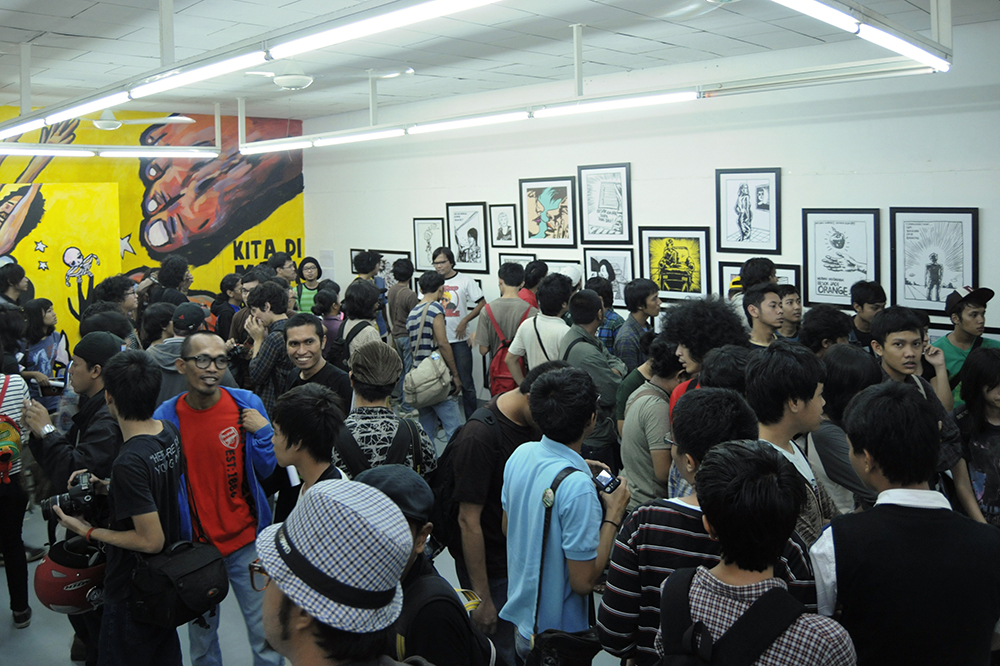ruangrupa (spelled and written with a lowercase ‘r’) was founded in Jakarta in 2000 by a group of artists. the founders felt that there was a great necessity for “space” (physically and mentally) in Jakarta, where artists could work intensively and could direct their attention more to means of analysis and less to means of production. A space that conveyed the ideas of visual art – which are important to analyse, mediate, and furnish – like public art, performance art, and video art. The founders felt that this was the only way in which visual art could possess a critical sensibility, which is the most important position of art in society.
As a non-profit organization, ruangrupa consistently advances artistic ideas in both an urban context and within culture at large through exhibitions, festivals, art laboratories, workshops, research, and by publishing books, magazines and online journals.
During its journey of almost two decades, ruangrupa has changed its programs and restructured its organization several times. From the beginning, the organization’s workflow was intentionally designed so flexible that everyone could continue to work individually. ruangrupa is used to work with a myriad of individuals of different backgrounds. Every individual is a key to a treasure trove of historical and cultural fact.
This is also evident from the house that became ruangrupa’s space during its early days. Located in the south of the city, ruangrupa is more like a clubhouse: always open, always peopled – a studio, a library, a research lab and a party venue, all in one.




Gudang Sarinah Ekosistem (2015 -2018)
During this period, ruangrupa developed the cultural platform Gudang Sarinah Ekosistem (GSE) together with a number of artists’ collectives in Jakarta. The platform took its name from their new space located in Pancoran, South Jakarta, namely Gudang Sarinah. GSE is an interdisciplinary space that aims to maintain, process and build an integrated support system for creative talents, diverse communities, and various institutions. GSE also aspires to be able to build networks, collaborate, share knowledge and ideas, and encourage critical thinking, creativity and innovation. The results of the collaboration between the three organizations are open to the public – and are presented in the form of exhibitions, festivals, workshops, discussions, film screenings, music concerts, and journals.

GUDSKUL Ekosistem (2018 – now)
In 2018, ruangrupa together with Serrum and Grafis Huru Hara initiated GUDSKUL: Contemporary Art Collective and Ecosystem Studies (or, for short, Gudskul, pronounced like “good school” in English), a public learning space. Gudskul is designed as a collective working simulation study space that promotes the importance of critical and experimental dialogue through a sharing process and experience-based learning.
ruangrupa began as a contemporary art ecosystem that was developed from a non-profit work model. Most of the operational support of each collective comes from donor agencies, sponsors and independent funding from the business units, in addition to voluntary donations from collective members. When deciding to work together as an Ecosystem, ruangrupa with Serrum and Grafis Huru Hara ventured to create a common pool system in which all resources were collected and divided proportionally, according to each collective’s needs.
Gudskul developed a paid program as a form of support for a knowledge distribution model. This model is one of the strategies implemented to create an independent sustainability system. This paid system allows each participant involved in Gudskul to support one another and is available in several financing options, with a donation and self-help system.






















